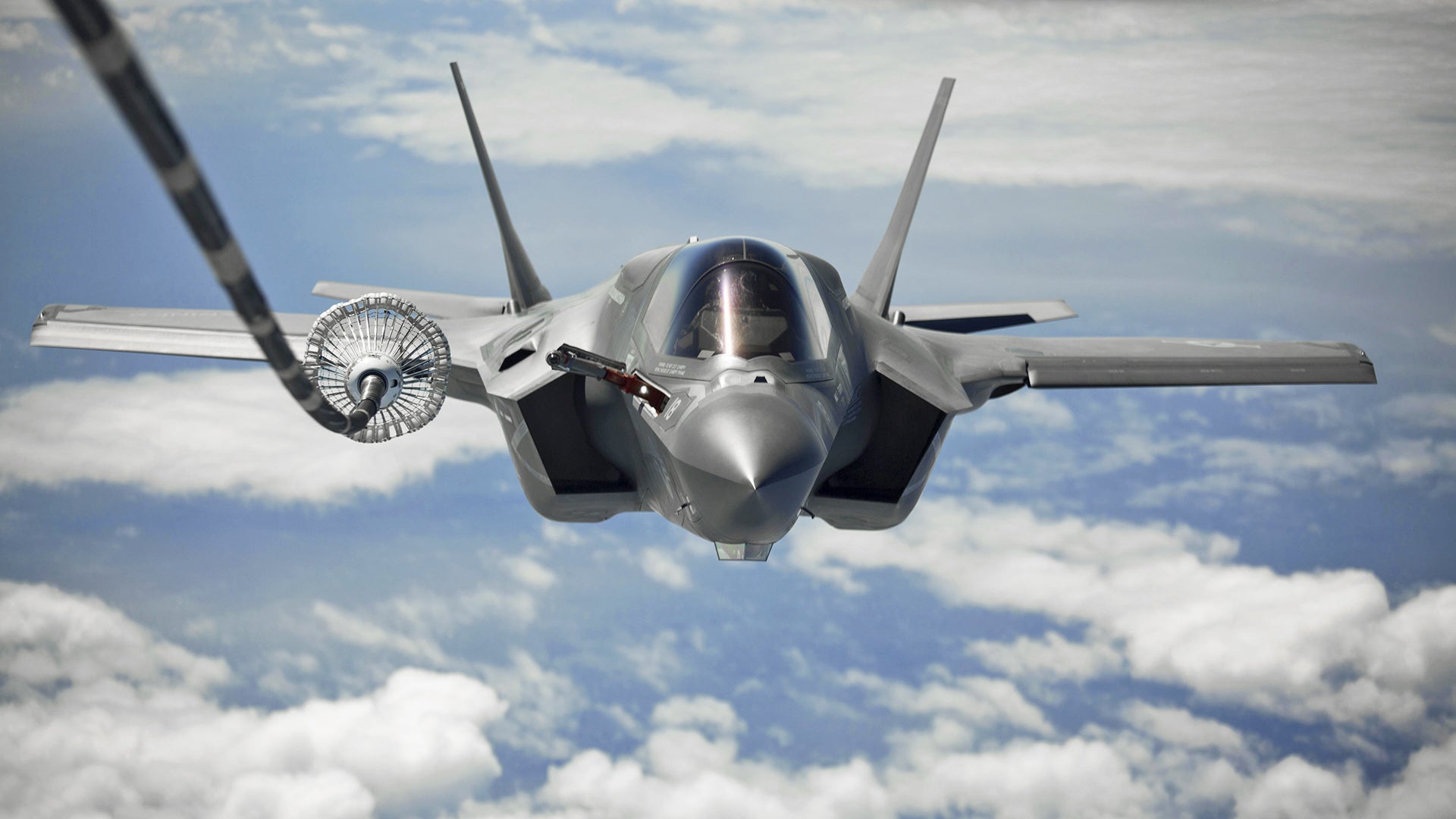Marking a major milestone in its development, the long awaited operational deployment of the F-35 is underway. A group of Joint Strike Fighters from Marine Fighter Attack Squadron 121, the “Green Knights,” left their home base at MCAS Yuma in Arizona on Monday, starting their hop across the Pacific to their new home at Marine Corps Air Station Iwakuni in Japan. Once bedded down there, a total of 10 F-35Bs will begin to participate in a number of exercises, many of them multinational, with major allies in the region.
The Japanese Ministry of Defense will be watching the deployment closely, as they’re a customer of the F-35, with 28 F-35As on order for JASDF the and another 24 as options. South Korea is also planning to buy 40 of the jets, and will very likely be one of the first places the Green Knights will show up after arriving in the region.
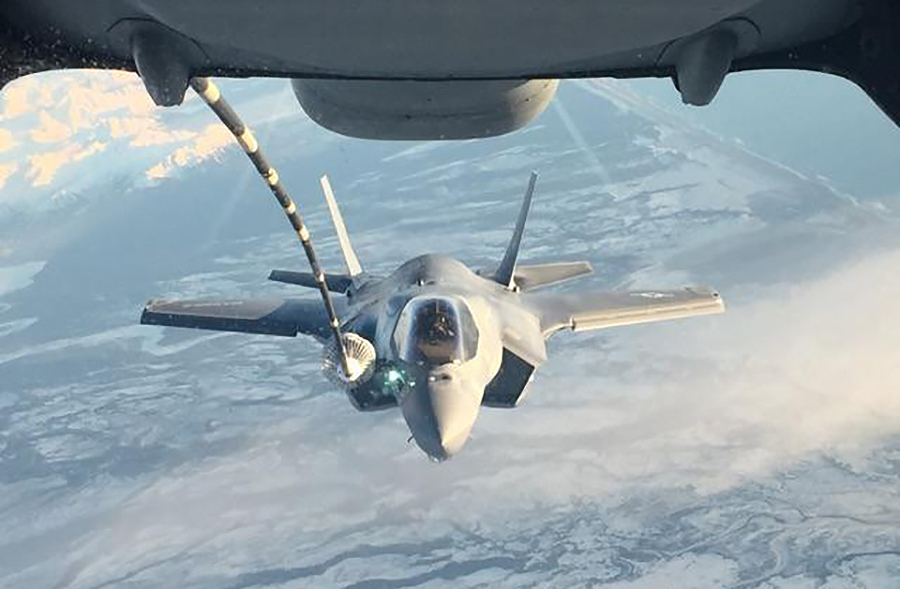
Traditionally, Marine Hornet squadrons forward based at Iwakuni have also found themselves flying alongside their Australian counterparts (another F-35 customer) as well as other Southeast Asian allies. These training detachments paired with the slowly eroding security situation in the region, alongside the unprecedented public affairs push that has accompanied the F-35 program in recent years, will likely result in a well publicized and eventful maiden operational deployment for the type.
Towards the middle of 2017 VMFA-121 will get an extra six F-35Bs which are slated to go on a cruise aboard a Landing Helicopter Dock amphibious assault ship for the first time later in the year. Instead of using the USS Bonhomme Richard, which is already forward deployed to Japan, the ship will be swapped out for the USS Wasp. The Bonhomme Richard will be relocated to San Diego and the Wasp will have to make the long voyage from Norfolk, Virginia to its new home in Japan.
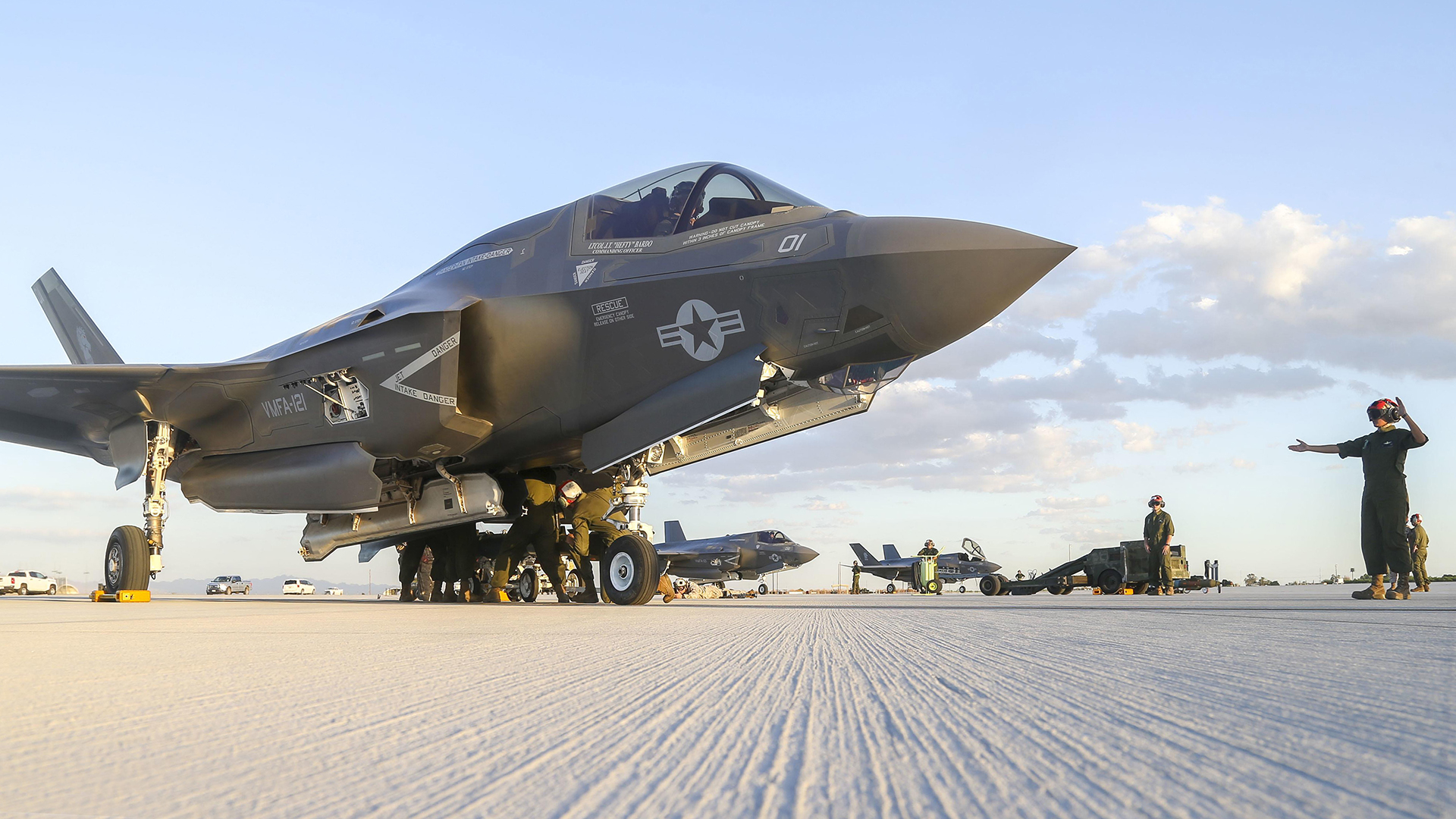
This fairly elaborate swap is the result of an extensive number of costly improvements that have to be made to existing LHDs for them to handle low volumes of F-35Bs. This operational deployment will be the Wasp’s second in over a decade.Before a recent deployment the ship had largely been relegated to training and testing duties due to chronic issues with its combat management and support systems. Recent upgrades to its sensors, communications, self-defense and local area network should allow it to finally take on standard operational schedule.
Another deployment for the F-35B, this one slated for early 2018, will see the USS Essex host a contingent of jets from VMFA-211. This deployment could end up seeing the F-35B take part in its first anti-ISIS sorties—which also could be its first combat missions of any kind—as the ship and its Amphibious Strike Group will likely to end up in the Persian Gulf.
Getting the F-35 into the fight, or even operating internationally in any real capacity, is obviously a major goal for the troubled program. In the meantime, a recent response from Undersecretary of Defense Frank Kendall to a request for clarification from Senator John McCain has been made public, detailing further delays in the Joint Strike Fighter development and test program, which you can read here.
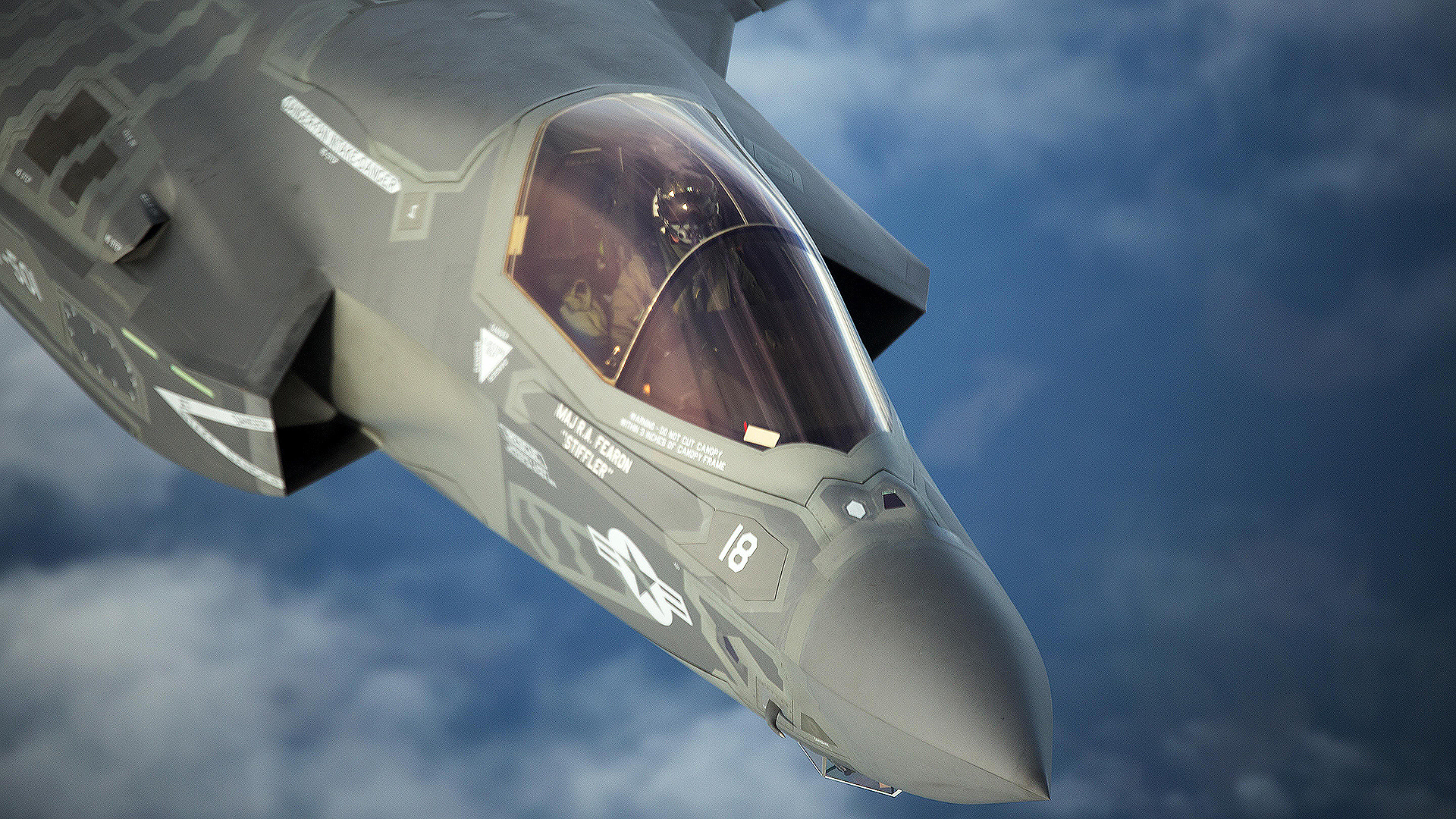
The F-35Bs imminent arrival in Asia comes at a time when China is flexing its power projection muscles like never before. After taking an unprecedented route into the South China Sea and executing exercises in that tense region, China’s only carrier and its newly fully integrated battle group traversed the Taiwan Strait on Wednesday. The move sent pretty much the whole Taiwanese military into high alert, with fighters, surveillance aircraft, and naval vessels scrambled to monitor the Liaoning’s transit.
This is not the first time the ship has taken the route, it did so back in late 2013—but it was not anywhere near as capable as it is today. With the Liaoning and her battlegroup approaching the operational threshold, it won’t be the last—this route will likely become a normal one for Liaoning as she sails from her home port in Qingdao to the turbulent waters of the South China Sea in the future. Vice Foreign Minister of China Liu Zhenmin said the following about Liaoning’s passage through the Taiwan Strait:
“The Taiwan Strait is an international waterway shared between the mainland and Taiwan. So, it is normal for the Liaoning to go back and forth through the Taiwan Strait in the course of training, and it won’t have any impact on cross-Strait relations.” Taiwan clearly doesn’t feel the same about the matter.
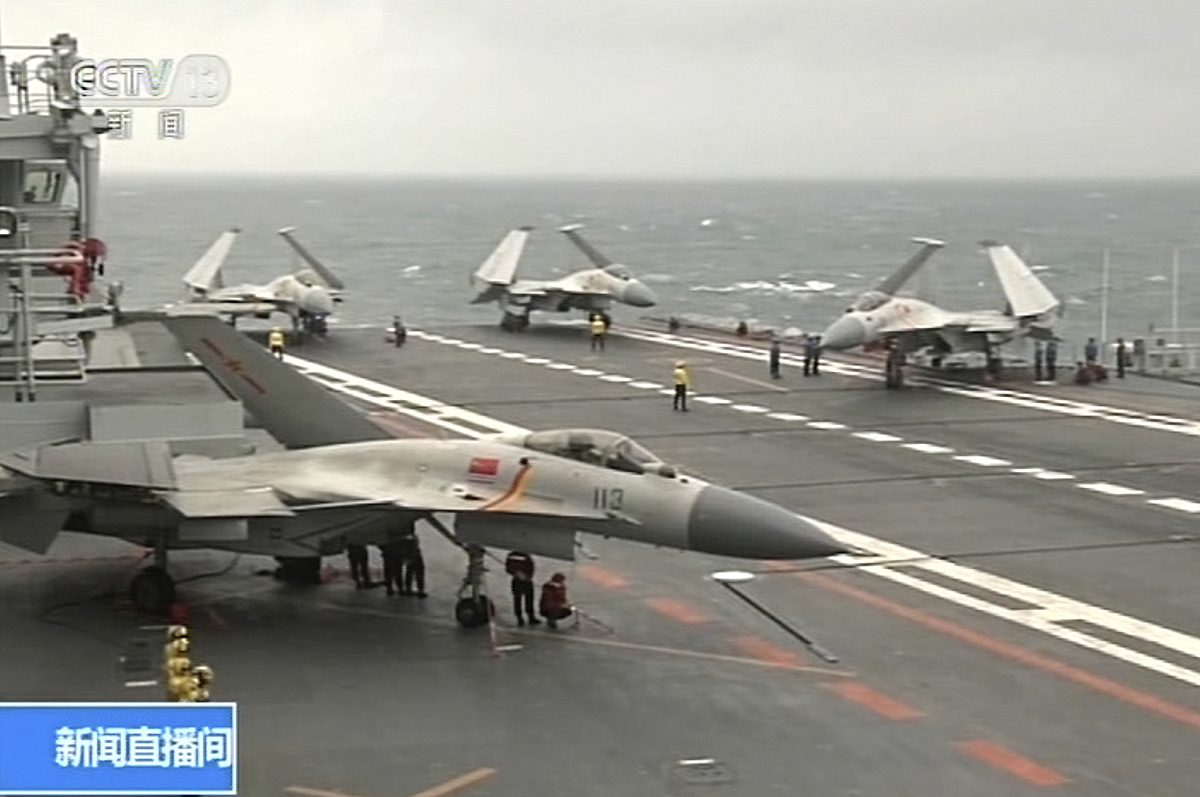
China’s ever more powerful Carrier Battle Group’s voyage north inside one of the tensest and heavily armed bodies of water on the planet comes just a day after Chinese airmen circumnavigated Taiwan counterclockwise using long-range aircraft, presumably H-6K bombers and intelligence gathering aircraft. Chinese Su-30 fighter escorts also picked up the aerial formation at both ends of its journey.
This is not the first time China has executed this type of fairly provocative perimeter flight of Taiwan. In late November they did the same thing, although in a clockwise manner. That flight included two H-6K bombers, as well as Y-8 and Tu-154 surveillance planes.
Just hours before the Taiwan circumnavigation flight, six Chinese H-6K long-range bombers, an electronic surveillance plane and an airborne early warning and control jet flew from the East China Sea, over the Tsushima Strait and into the Sea of Japan and back. As a result, Japan and South Korea sent dozens of fighters and surveillance aircraft scrambling to monitor the operation. Although Chinese aircraft have passed through the area before, this was by far the largest aerial show of force over the Tsushima Strait put on by the Chinese military.
Adding to this frenzy of activity, just this weekend China’s H-6K bombers were back at it again. This time aircraft circled China’s man-made island outposts in the Spratly Island archipelago that sit at the heart of Beijing’s territorial claims over nearly the entire South China Sea. This was the second time since the beginning of the year that Chinese bombers flew that route.
China’s Navy and long-range PLAAF assets have been increasingly used to expand China’s regional influence and to project new levels of power in recent years. As the number of flights and naval drills have increased rapidly in their range, capability, internationality and complexity, tensions with competing powers in the region and with the US have also heightened. But the activity China has shown over the last few days is unprecedented. Now with America’s long awaited super fighter nesting for the first time in Asia, expect even more elaborate displays of expanding force from China in the coming months.
Contact the author Tyler@thedrive.com
Authors note: A reader mentioned the Wasp just came back from its first operational deployment after serving in a reserve-type role for over a decade. The text was updated to reflect this.
